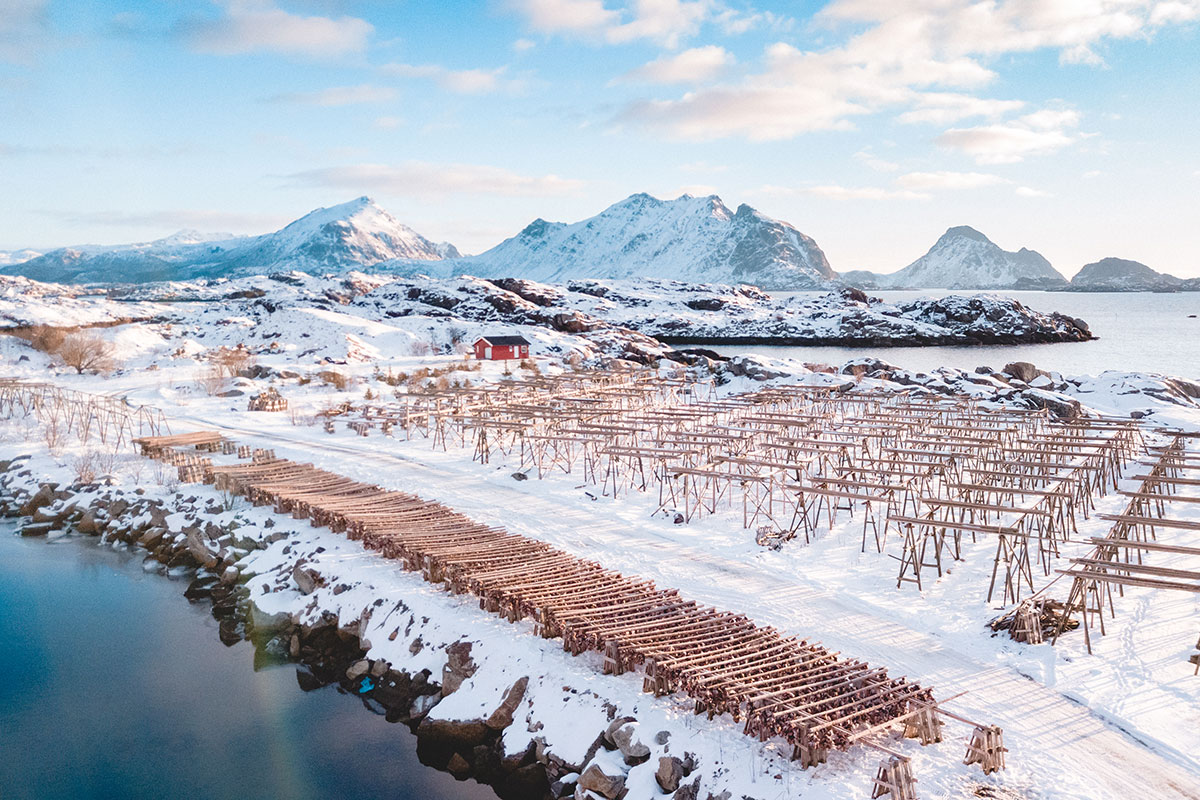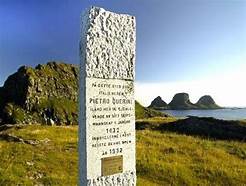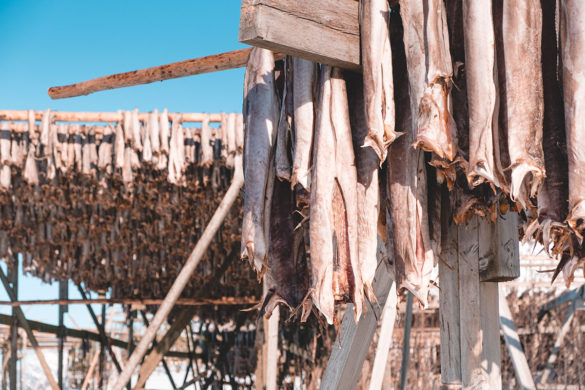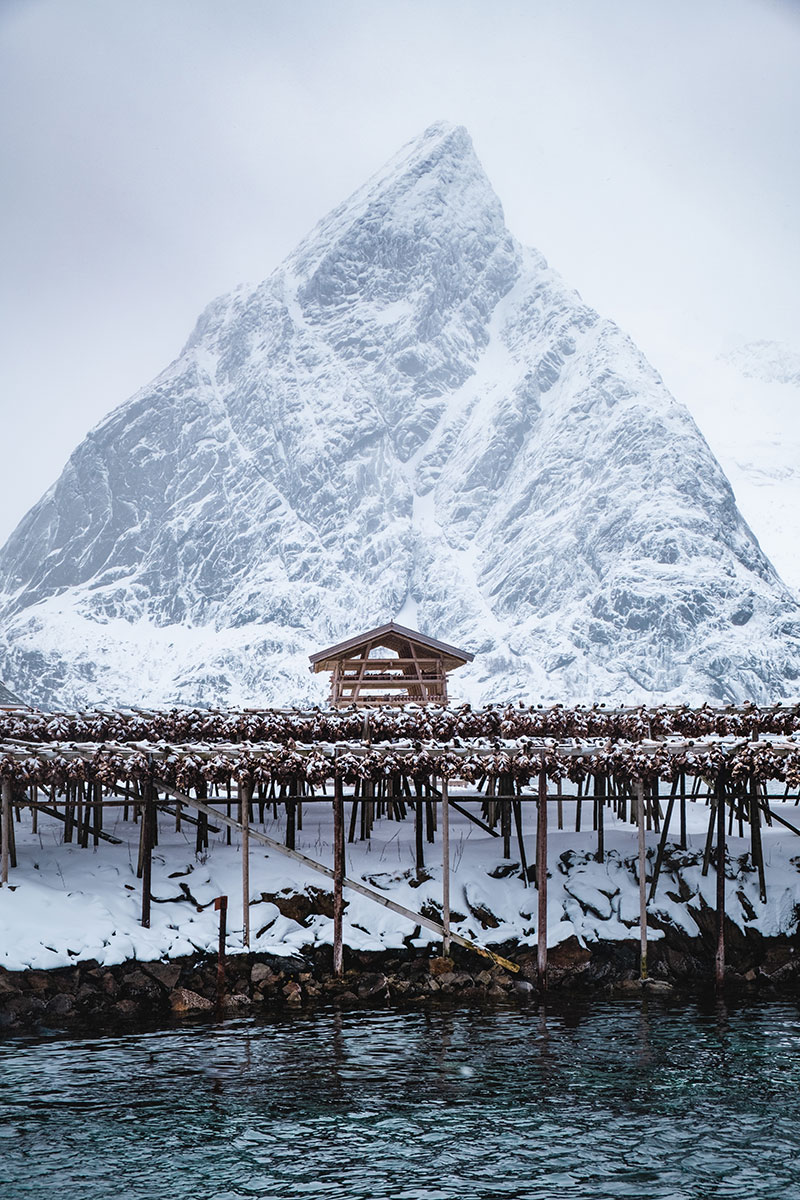Da un naufragio alle Lofoten, tre secoli fa, la storia dello stoccafisso alla veneziana
E' un naufragio che racconta di un incontro tra cristiani, tra mercanti, tra la barbara eppure civile Norvegia e la sofisticata ma obbrobbriosa Venezia

E' un naufragio che racconta di un incontro tra cristiani, tra mercanti, tra la barbara eppure civile Norvegia e la sofisticata ma obbrobbriosa Venezia

(English translation below)
Scopriamo la fraternità dei tracciati di geografia, cultura, tradizioni, avventure, sentiamo il mondo intero come una sola casa, in luoghi che parlano e tacciono, come una lapide in un‘isola remota, alle Lofoten.
Lontano, a tavola a Venezia, un piatto tipico offre la stessa epifania, racconta la stessa storia. E così il libro di Pietro Querini Il naufragio della Querina, con una storia di sei secoli fa, minore, di quelle che non sono insegnate a scuola eppure spiegano cosa sia la globalizzazione. In questi luoghi così diversi, tutto torna, i fili si riannodano con ordine nell’intrico e nella dispersione dei sentieri, e il viaggio si fa una locandina di vita, di destini collettivi e individuali, di macchina del tempo.

Potremmo mescolare le carte e cominciare indistintamente in qualsiasi punto, come in tanti viaggi. Alle Lofoten, al cospetto del Mare del Nord, una stele è unica per collocazione e per la storia che tramanda. Ricorda un naufragio di sei secoli prima, quello della nave veneziana Querina, affondata al largo dell’Irlanda e poi alla deriva per sette mesi.
Alcuni marinai morirono divorati letteralmente dai pidocchi che scavarono la pelle fino ai nervi, altri sopravvissero bevendo urina mescolata con zenzero e qualche spezia. Solo due scialuppe approdarono miracolosamente nel gennaio del 1432 all’isola norvegese di Røst. Dei sessantotto membri dell’equipaggio, ne sopravvissero sedici, e tra questi il comandante Pietro Querini.
Erano partiti dalla solare Creta e dovevano sbarcare spezie e vino nelle Fiandre, e invece la destinazione finale fu una terra sconosciuta e dura, e delle mercanzie non avevano più nulla. Ai pochi abitanti delle Lofoten apparvero come marziani, signori malridotti ma subito percepiti come appartenenti a una cultura superiore, cosmopoliti e con un codice comune: quello delle genti di mare, dei mercanti viaggiatori. Soprattutto, condividevano con loro la fede in Cristo, e subito i pescatori condivisero il poco che avevano. Richiamato dall’arrivo di quei naufraghi malconci ma illustri, un sacerdote con poche parole di latino riuscì a intendere la loro storia.
Querini restò interdetto dalle soprese di quel viaggio, dalla rivelazione dei costumi di quella popolazione, quasi barbara eppure civilissima. Erano tutti mercanti, quei veneziani, e per quanto malridotti, trasformarono il naufragio in un’osservazione attenta. Scoprirono l’antica tecnica locale di conservazione del pesce, seccato all’aria aperta. Oltre al monumento, ancora oggi vediamo alle Lofoten, non diverse dopo secoli, le strutture di legno per l’essiccatura dello stoccafisso. Dopo la geografia, c’imbattiamo anche nella linguistica: quel nome fu coniato proprio da Querini, trasformando il locale “stockfisk”.

Rifocillati e arrivata la primavera, i veneziani poterono ripartire per il lungo viaggio terrestre verso casa. Tornarono sani e salvi a Venezia, portandosi dietro sessanta di quei merluzzi saporiti e duri come il legno.
Si rivelò una scoperta provvidenziale per le provviste di ogni spedizione navale e a Venezia fu trasformato facilmente nel baccalà, cucinato e mantecato, come ancora oggi. Nei confronti di quei pescatori norvegesi la gratitudine si trasformò in una relazione commerciale e cominciarono le importazioni. Ancora oggi buona parte dei quaranta milioni di chili di merluzzo delle Lofoten sono esportati in Italia.

Merito del caso, forse. Ma soprattutto quella curiosità antropologica per l’ingenua e onesta vita di questi norvegesi analfabeti, privi dell’uso della moneta, di opere d’arte o libri, ma anche di intrighi e avidità. Con umiltà e rispetto, Querini riconobbe che alle Lofoten “davvero possiamo dire di essere stati nel primo cerchio del paradiso a confronto delle imbarazzanti e obbrobriose abitudini italiche”.
La sua relazione trasforma in letteratura questa storia di mare, di geografie allora senza comunicazione, di linguistica, di gastronomia, di etica del viaggio. “Niente è più necessario a chi va per il mondo che l’essere di aperte vedute e comportarsi di conseguenza”, conclude Querini, e da qualunque parte si voglia prendere questa storia, cominciandola per la lettura, per la visita alla lapide alle Lofoten, o per un piatto di baccalà alla vicentina, i suoi intrecci sigillano l’accettazione del destino multiplo del viaggiatore, ne sono il suo breviario.
ENGLISH VERSION
It is a shipwreck that tells of a meeting between Christians, between merchants, between the barbaric yet civilized Norway, and the sophisticated but oppressive Venice
We discover the fraternity of the interconnections of geography, culture, traditions, and adventures, we feel the whole world as one home, in places that speak and are silent, like a tombstone on a remote island, in Lofoten.
Far away, at the table in Venice, a typical dish offers the same epiphany, and tells the same story. And so a book with a history of six centuries ago, a minor one, not taught in school and yet explaining what globalization is. In these so different “places”, everything returns, the threads are re-tied in order in the tangle and dispersion of the paths, and the journey becomes a poster of life, of collective and individual destinies, of a time machine.
We could shuffle the cards and start indiscriminately at any point, as in many journeys. In Lofoten, in front of the North Sea, a stele is unique for its location and for the history it handed down. It recalls a shipwreck of six centuries earlier, that of the Venetian ship Querina, which sank off the coast of Ireland and then adrift for seven months. Some sailors died literally devoured by lice that dug the skin up to the nerves, others survived by drinking urine mixed with ginger and some spice. Only two lifeboats miraculously landed in January 1432 on the Norwegian island of Røst. Of the 68 crew members, 16 survived, including commander Pietro Querini.
They had departed from sunny Crete with a cargo of spices and wine for Flanders, and instead, the final destination was an unknown and hard land, and of the merchandise, nothing was left. To the few inhabitants of the Lofoten, they appeared as Martians, battered lords but immediately perceived as belonging to a superior culture, cosmopolitan and with a common code: that of the sea people, of traveling merchants. Above all, they shared a common faith in Christ and the fishermen immediately shared the little they had. Recalled by the arrival of those battered but illustrious castaways, a priest with a few words of Latin was able to understand their story.
Querini was baffled by the surprises of that trip, by the revelation of the customs of that almost barbarous yet civilized population. They were all merchants, those Venetians, and however battered they were, they transformed the shipwreck into careful observation. They discovered the ancient local technique of preserving fish, dried in the open air. In addition to the monument, we still see in Lofoten, not different after centuries, the wooden structures for drying stockfish. After geography, we also come across linguistics: that name was coined by Querini, transforming the local stockfisk.
Refurbished and with the arrival of spring, the Venetians were finally able to leave for a long journey back home. They returned safely to Venice, taking with them sixty of those tasty and “hard as wood” cod. They turned out to be a providential discovery for the supplies of every naval expedition and in Venice that dried fish was easily transformed into cod, cooked and creamed, as it still is today. Gratitude to the Norwegian fishermen became a commercial relationship and imports began. Even today, most of the forty million kilos of cod from Lofoten are exported to Italy.
The shipwreck was one of the affairs of the century, and one of the most enduring. About the case, perhaps. But above all that anthropological curiosity for the naive and honest life of these illiterate Norwegians, deprived of the use of coins, works of art or books, but also of intrigue and greed. With humility and respect, Querini acknowledged that in Lofoten “we can truly say that we have been in the first circle of heaven, compared to the embarrassing and oppressive Italic habits”.
His travel account transforms this sea story into literature, into geography at that time without communication, into linguistics, gastronomy, and travel ethics. “Nothing is more necessary to those who go around the world than to be open-minded and behave accordingly”, concludes Querini, and wherever you want to take this story, starting it for reading, for a visit to the tombstone at Lofoten, or for a plate of baccalà alla vicentina, its different aspects seal the acceptance of the traveler’s multiple destiny, they are his breviary.
